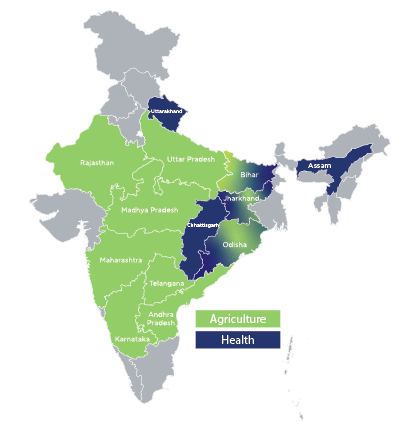Training frontline workers: Frontline workers who screen the videos in their communities arecrucial to our success. Since 2012, we have partnered with the Government of India’s National Rural Livelihoods Mission (NRLM) and its state-level counterparts to train over 12,500 frontline workers to use our approach for promotion of sustainable agriculture & nutrition practices in over 15,200 villages across India.
Connecting farmers to markets: Each week, smallholder farmers in India spend as much as a full day selling their produce at the nearest market, incurring especially high opportunity and transport costs when their produce volumes are low. To reduce those costs, Digital Green enables farmers to more efficiently access markets through digital solutions it creates with their feedback.
Improving health outcomes: In an effort to address the holistic needs of rural communities, we address maternal, new-bornand child health with a focus on family planning, hygiene and sanitation practices. The videos produced and disseminated communicate simple health practices that can lead to substantial improvements in health and nutrition among India’s rural communities.
Learning & Evaluation: We learn from everything we do. No matter whether it was a success or a failure. We listen closely –to people, and to data.Data collection, analysis and evaluation is critical to what we do. We share the quantitative and qualitative data gathered with all stakeholders, creating a community of collaborators that improves systems on an ongoing basis. We use evidence from the grassroots-level to inform and galvanize everyone involved to advance rural development.


